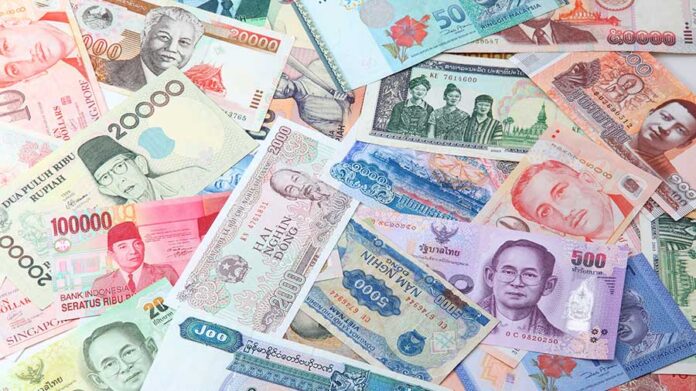ASEAN members have agreed to promote the use of local currencies in transactions and improve regional payment connectivity in an effort to move away from established currencies such as the US dollar. The agreement was signed during the 42nd ASEAN Summit and is intended to increase trade within the bloc while also strengthening financial resilience and value chains. ASEAN accounts for about 7% of global GDP. The use of local currencies is also seen as a way to mitigate risks associated with US sanctions and diversify reserve currencies. The initiative will also encourage greater financial inclusion for the region’s unbanked and underbanked populations, and for SMEs.
The Association of Southeast Asian Nations (ASEAN) comprises of ten countries in Southeast Asia and represents a rapidly growing economic region in the world. Despite this, ASEAN countries still rely heavily on the United States dollar (USD) in their international transactions. However, the current global economic uncertainty provides an opportunity for ASEAN to increase local currency transactions and reduce USD reliance. The following article will outline the reasons for this shift, the challenges it poses, and the benefits of enhancing local ASEAN currencies.
Why Shift Away from USD?
The COVID-19 pandemic has created unprecedented volatility in the world’s financial markets, including the value of the USD. This uncertainty and volatility have made many ASEAN countries realize the risks of depending highly on the USD in international transactions. As a result, ASEAN countries have become increasingly interested in shifting towards local currency transactions to improve their economic and financial stability.
Additionally, local currency transactions provide several advantages. Firstly, when trading in local currency, ASEAN countries no longer have to worry about exchange rate fluctuations, which can lead to significant losses in international transactions. Secondly, transactions in local currency reduce the cost of currency exchanges and reduce transaction costs. Thirdly, it promotes greater economic integration among ASEAN countries and reduces dependence on USD.
Challenges to Increasing Local Currency Transactions
Despite the numerous benefits of shifting towards local currency transactions, there are some obstacles that ASEAN must overcome. Firstly, the usage of different currencies across ASEAN countries creates a challenge in establishing a unified payment system. Secondly, some currencies may not have sufficient liquidity, making it difficult to facilitate transactions. Thirdly, there may be a lack of confidence in local currencies, leading people to prefer using the USD.
Benefits of Enhancing Local ASEAN Currencies
Enhancing local ASEAN currencies’ capability will result in several benefits to regional economies. Firstly, it will lead to more stable and predictable regional trade relations, especially given the global economic uncertainty. Secondly, it will reduce regional currency volatility due to external forces such as global oil price fluctuations. Thirdly, it will provide better opportunities to grow regional financial markets for the ASEAN countries.
Conclusion
To conclude, reducing USD reliance is crucial for ASEAN countries as it will help the region gain greater financial stability, reduce transaction costs, and foster economic integration. Despite the challenges posed by a shift towards local currencies, the benefits that may arise from the development of local currencies in the long run make this transition worthwhile. Given the current global economic uncertainty, this shift is much needed to ensure that ASEAN can continue to grow and thrive in the future.


